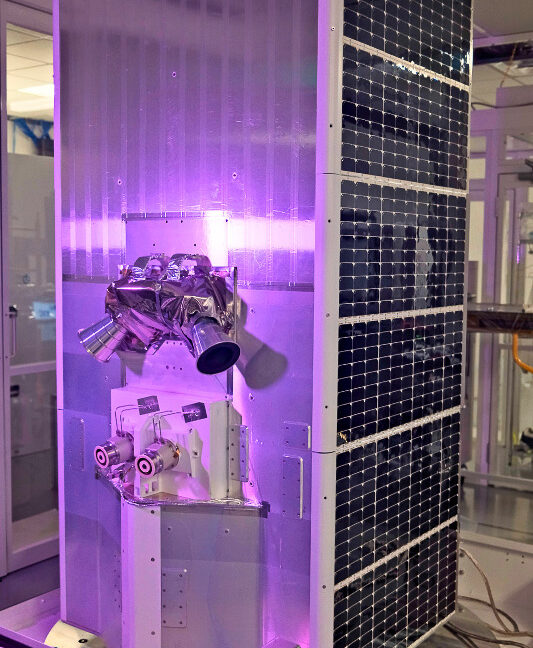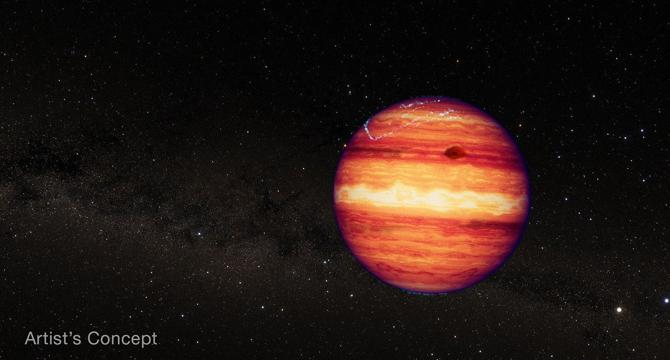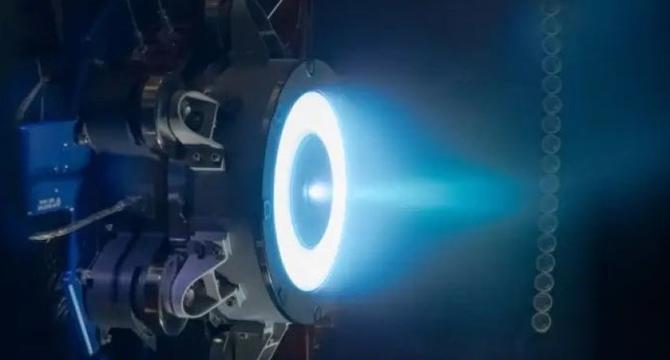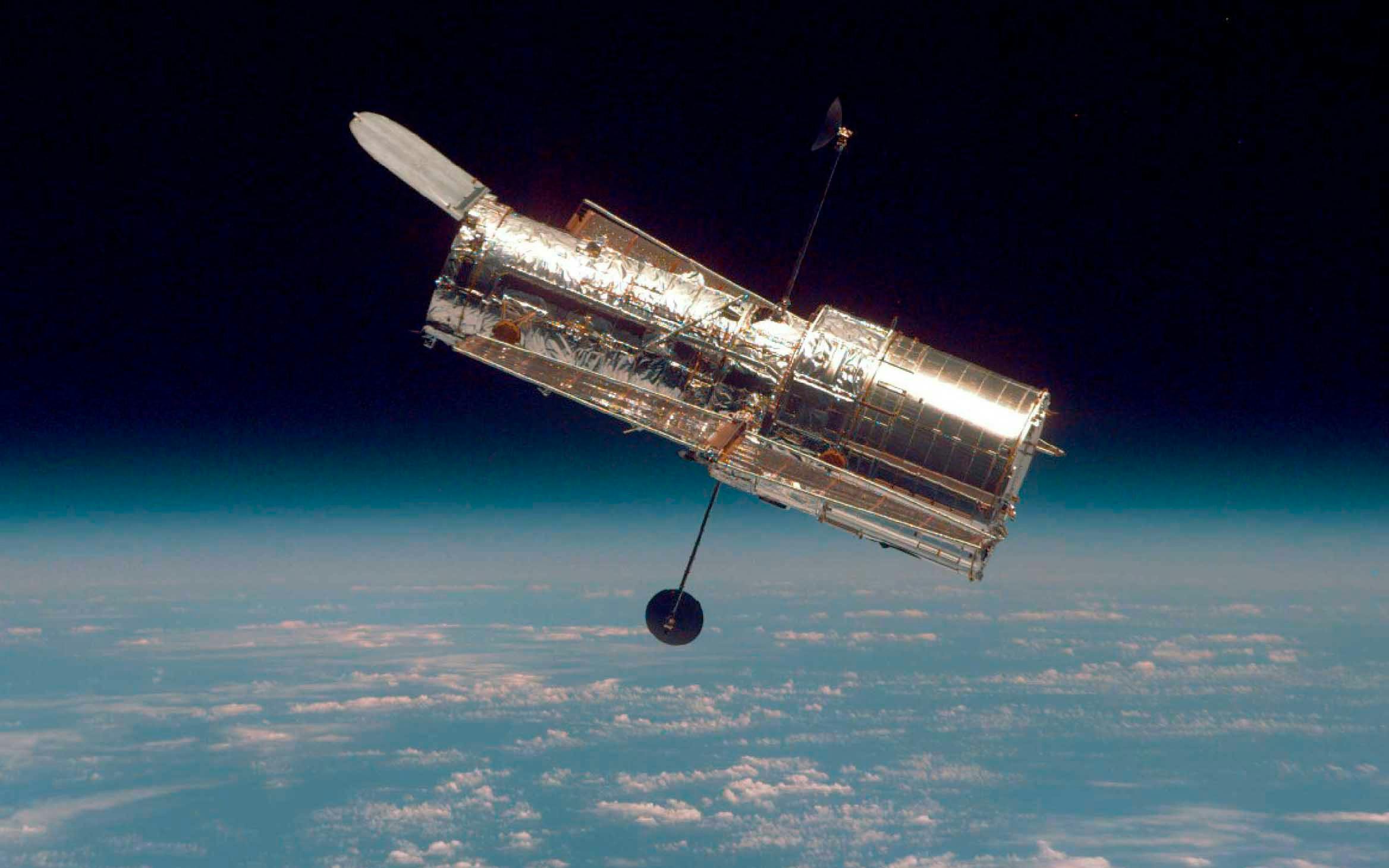Space News
Arstechnica
172

Image Credit: Arstechnica
The modern era of low-flying satellites may begin this week
- The modern era of low-flying satellites may begin this week.
- The idea of flying satellites in very low-Earth orbit is not new.
- Satellites have traditionally flown at higher orbits to avoid atmospheric drag.
- Flying satellites in low-Earth orbit presents challenges but offers clear views of the planet.
Read Full Article
10 Likes
Nasa
436

Image Credit: Nasa
NASA Names Norman Knight as Acting Deputy Director of Johnson Space Center
- NASA has selected Norman Knight as acting deputy director of Johnson Space Center.
- Knight currently serves as Director of Johnson’s Flight Operations Directorate (FOD).
- He will serve in the dual role of deputy director and FOD director for the near term.
- Knight has an accomplished career in NASA, progressing through various management roles.
Read Full Article
26 Likes
Nasa
281

Image Credit: Nasa
NASA’s Webb Exposes Complex Atmosphere of Starless Super-Jupiter
- NASA's James Webb Space Telescope discovered complex variations in brightness of the planetary-mass object SIMP 0136.
- These variations are attributed to atmospheric factors such as cloud layers, temperature, and carbon chemistry.
- The findings provide insight into gas giant atmospheres inside and outside our solar system.
- SIMP 0136, located 20 light-years from Earth, rotates rapidly, making it a valuable target for exo-meteorology studies.
- Previous observations from ground-based telescopes, Hubble, and Spitzer laid the groundwork for Webb's observations of SIMP 0136.
- Webb captured thousands of spectra using NIRSpec and MIRI instruments, unveiling changes in cloud cover, temperature, and carbon chemistry.
- Distinct light-curve shapes in the observations indicated various atmospheric phenomena affecting brightness variations.
- The research revealed patchy clouds, hot spots, and carbon chemistry fluctuations as potential contributors to the observed variability.
- The study highlights the importance of detailed atmospheric characterization in preparation for future exoplanet imaging missions.
- This research, part of Webb's General Observer Program 3548, contributes to expanding our understanding of planetary atmospheres.
Read Full Article
16 Likes
Discover more
Knowridge
45

Image Credit: Knowridge
Rogue planets: Born from chaos in young star clusters
- Planetary-mass objects (PMOs) are mysterious, unattached objects in space that have puzzled astronomers.
- Previously believed to be failed stars or ejected planets, new research shows that PMOs form through interactions between young stars and their gas disks.
- The powerful gravitational forces between disks cause gas to collapse into dense filaments and break apart into smaller gas clouds, which can reach a critical mass and become PMOs.
- Unlike planets, PMOs move in sync with stars in their birth cluster and can potentially have their own moons or smaller planets.
Read Full Article
2 Likes
TechBullion
268

Image Credit: TechBullion
Spire Establishes Two-Way Laser Communication Between Satellites in Space
- Spire Global, Inc. has successfully established a two-way optical link between two satellites in orbit.
- This achievement enhances the speed, reliability, and security of data transmissions for future missions.
- The OISL technology was supported by a European Space Agency (ESA) project.
- Spire plans to launch three additional satellites with OISL technology in 2025.
Read Full Article
16 Likes
Spaceflightnow
395

Live coverage: Arianespace to launch an Ariane 6 rocket on its 1st commercial mission
- Arianespace and the European Space Agency (ESA) are set to launch the first Ariane 6 rocket on its 1st commercial mission.
- The rocket will carry the CSO-3 satellite, the third and final satellite for the French military's Optical Space Component (CSO) program.
- Positioned in sun-synchronous orbits, the CSO constellation will provide defense and reconnaissance information for the French Air and Space Force's Space Command.
- The CSO-3 satellite will be launched into a Sun-synchronous orbit (SSO) at an altitude of about 800 km and an inclination of 98 degrees.
Read Full Article
23 Likes
The Verge
348

Image Credit: The Verge
Blue Ghost private lander reaches the Moon intact
- The Blue Ghost spacecraft has successfully landed on the moon, becoming the first private lander to achieve this feat.
- Blue Ghost will perform research operations for two weeks, including lunar subsurface drilling, sample collection, and dust mitigation experiments.
- The lander aims to provide environmental data and test technologies to support future NASA missions to the Moon.
- Blue Ghost also plans to capture high-definition images of a total eclipse on March 14th from the Moon.
Read Full Article
19 Likes
Brighter Side of News
222

Image Credit: Brighter Side of News
NASA Scientist Creates a Space Rocket That Runs Without Fuel
- Dr. Charles Buhler, a veteran NASA engineer, has developed a propellantless propulsion drive that defies gravity.
- The innovation harnesses electric fields to generate sustainable thrust without expelling mass, revolutionizing propulsion technology.
- Through years of experimentation and collaboration, Buhler's team achieved significant milestones and secured patents for their discovery.
- The breakthrough opens new possibilities for space exploration and invites further scientific inquiry.
Read Full Article
13 Likes
Hackernoon
245

Image Credit: Hackernoon
How NASA Engineers Extended the Life of the Hubble Telescope: a Story of Successful Modernizations
- NASA engineers designed the Hubble Space Telescope for easy servicing and repairs in space, extending its life through five shuttle missions from 1993 to 2009.
- The telescope's major components include its optics, batteries, antennas, pointing control system, jet wheels, gyroscopes, precision pointing sensors, solar sensors, and scientific instruments.
- Hubble's planned 15-year lifetime was extended to nearly 35 years through regular maintenance missions that replaced components like solar panels, gyroscopes, and cameras.
- The observatory's successful modernizations included the installation of new instruments like the Wide Field Camera 3 and the Cosmic Origins Spectrograph, enhancing its scientific capabilities.
- Special tools like the Pistol Grip Tool and Mini Power Tool were developed to aid astronauts in conducting repairs and upgrades during spacewalks.
- Astronaut training for Hubble maintenance missions included simulations and practice in neutral buoyancy simulators to prepare for the challenges of working in space.
- Hubble has made significant discoveries, such as confirming the expansion of the universe and detecting the most distant star, while contributing to various fields including medicine and endangered species monitoring.
- As Hubble enters its later years, it continues to operate with one gyroscope in reserve, with engineers anticipating its operations to extend into the 2030s.
- NASA plans to safely end the Hubble mission by organizing a controlled descent to ensure the telescope's debris falls in a predetermined location, eliminating any threat to humans.
- Despite encountering technical malfunctions and system failures, Hubble remains operational, conducting scientific research and contributing to our understanding of the universe.
Read Full Article
14 Likes
Earthsky
363

Image Credit: Earthsky
Beavers know better. They saved the Czech government $1 million!
- A colony of beavers in the Czech Republic saved the government $1 million by spontaneously building a dam in place of a stalled project.
- The Czech government's plan to construct a dam southwest of Prague faced bureaucratic delays for seven years.
- The beavers, using stones, wood, and mud, completed the dam, providing a natural solution while costing the government nothing.
- The beavers' efficient dam-building skills saved the Czech government $1.2 million USD without any labor or material expenses.
- Beavers are known as natural engineers, instinctively building dams in optimal locations for creating wetlands and safety.
- Their dams offer environmental benefits like carbon capture, water purification, flood prevention, and drought mitigation.
- Beavers have the ability to transform their environments positively, aiding in ecosystem sustainability and biodiversity.
- Scientists have recognized the significant role of beavers in reducing the effects of heavy metals and promoting ecosystem health.
- Conservation efforts across regions like Europe and California have focused on reintroducing beavers due to their environmental benefits.
- Despite concerns about their impact, beavers play a crucial role in maintaining ecosystems, prompting recognition of their positive contributions.
Read Full Article
21 Likes
Knowridge
63

Image Credit: Knowridge
For the sake of astronaut health, should we make the International Space Station dirtier
- A study led by researchers from the University of California San Diego suggests that a more diverse microbial environment could improve astronaut health in space.
- The extremely sterile environment inside spacecraft and the International Space Station (ISS) may contribute to health risks faced by astronauts.
- The study found that disinfectants and cleaning products were abundant throughout the ISS, while microbial diversity was lower compared to human-built environments on Earth.
- The researchers propose intentionally fostering diverse microbial communities in future built environments to better mimic natural microbial exposures and improve astronaut health.
Read Full Article
3 Likes
Digitaltrends
4

Image Credit: Digitaltrends
See the first images of the Blue Ghost lander on the surface of the moon
- The Blue Ghost lander has arrived on the moon's surface and captured its first images.
- One of the images shows the lander's shadow on the moon's surface and another image shows the lander with Earth visible in the night sky.
- The lander is equipped with instruments such as the X-band antenna and the Lunar Environment Heliospheric X-ray Imager (LEXI).
- The landing is seen as an incredible achievement and will contribute to future space exploration and human presence on the Moon.
Read Full Article
Like
Medium
227

Image Credit: Medium
How Earning $50 a Day in Bitcoin Changed My Life
- Discover a method to earn $25 to $50 per day in Bitcoin without any prior experience or investment.
- The 'Set & Forget' A.I. Bitcoin Money System generates Bitcoin profits for you without technical skills or initial investment.
- System allows anyone to start earning free Bitcoin within 24 hours of signing up.
- Users have reported successes and financial freedom with the system, providing opportunities for travel and investments.
Read Full Article
13 Likes
For uninterrupted reading, download the app